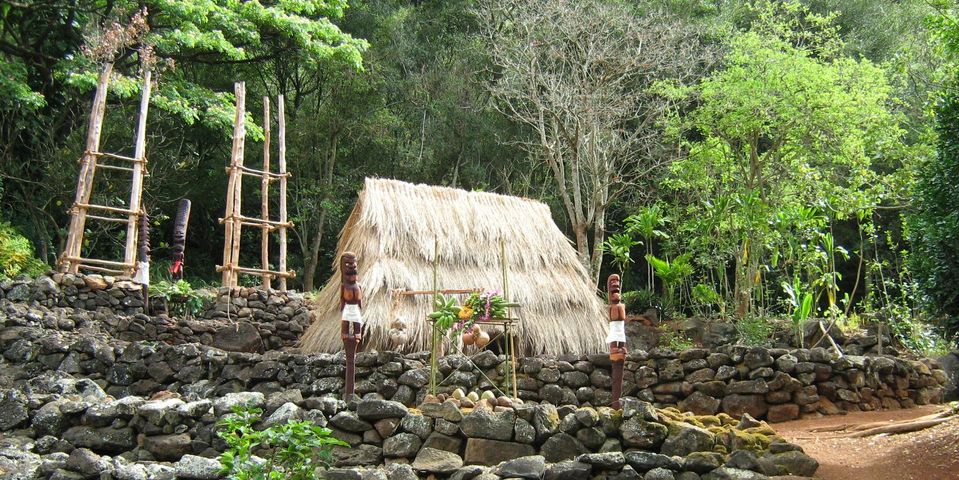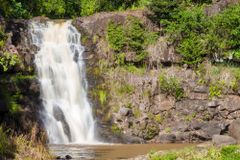
Learning about Hawaiian culture and history is a highlight for many visitors to the islands. However, that culture isn’t limited to luau and lei. Spirituality infuses all aspects of Hawaiian life, and that is evident at the many heiau throughout Oahu and beyond.
What Are Heiau?
Heiau are shrines built from wood and rock. The earliest heiau were built by families or small groups and were often simple altars made of a single stone dedicated to the worship of an individual akua, or god.
Over time, heiau became larger and more complex to host larger public worship ceremonies. The largest heiau were known as luakini, where offerings were made to protect the peace and prosperity of the people.
Most of the remaining heiau today feature a rock wall surrounding multiple buildings, but the central feature of any of these shrines is the altar where offerings and sacrifices were left for the akua.
What Gods Are Worshiped at Heiau?
Although smaller heiau were dedicated to worshiping family gods or ancestors, the larger public temples were dedicated to four primary gods: Lono, god of peace, agriculture and fertility; Kane, the creator; Kanaloa, god of the ocean, peace, and well-being; and Ku, god of war. In the larger heiau, worship was led by chiefs or priests.
What Are Some Heiau Rituals?
 Heiau worship typically included three parts: pule (prayers,), mele (chants,) and ho‘okopu (offerings). The prayers and offerings showed appreciation for and increased the spiritual strength of the akua, the individual making the offering, and the heiau itself.
Heiau worship typically included three parts: pule (prayers,), mele (chants,) and ho‘okopu (offerings). The prayers and offerings showed appreciation for and increased the spiritual strength of the akua, the individual making the offering, and the heiau itself.
In ancient Hawaiian culture, sacrificing animals to the gods in luakini was common. Smaller heiau, also known as mapele heiau, were primarily used to honor Lono and conduct ceremonies to ensure bountiful crops.
Although a large number of heiau have been lost to natural and man-made destruction, many remain and are still used as places of worship today.
When planning a visit to Oahu, include a day at Waimea Valley in Haleiwa to learn more about Hawaiian culture and history. Also known as the Valley of the Priests, this archaeological site is best known for its stunning waterfall and breathtaking botanical garden, but it’s also a cultural center where you can see how ancient Hawaiians lived and worshiped. During your visit, you can swim, visit a heiau, and enjoy hula dancing and lei making. To learn more about their hours and programs, visit them online, or call (808) 638-7766 to buy tickets.
About the Business
Have a question? Ask the experts!
Send your question

